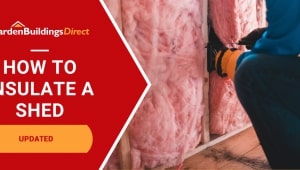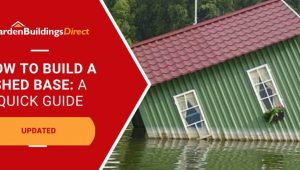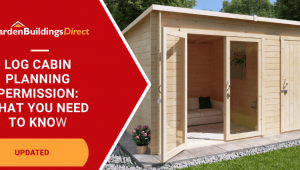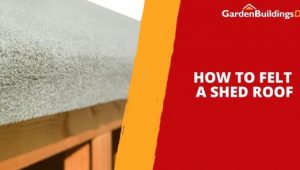Jump to:
Garden sheds are the go-to year-round storage for loads of stuff, but there are limits. This guide covers what you can store in a shed, plus some tips for the most efficient storage techniques.
Safe Items to Store in Your Garden Storage
Here are some examples of what’s good to go in your shed—but not limited to:
Garden furniture
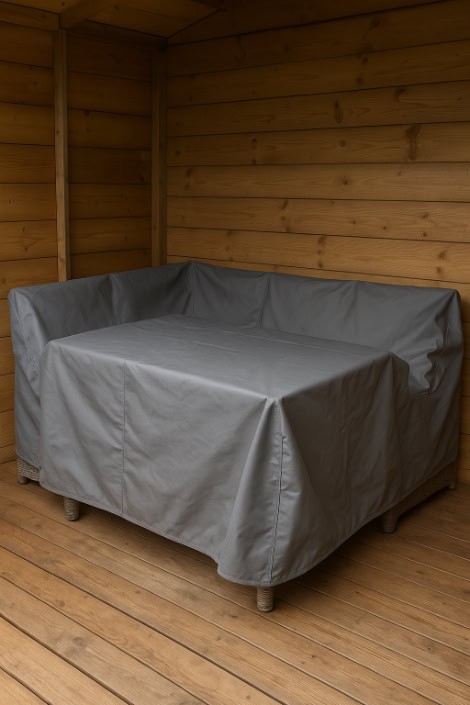
Outdoor furniture is built to cope with the weather, but leaving it all out year-round speeds up wear. We’re talking about rattan furniture, wooden, metal, and plastic designs.
Storing it in a shed gives it a break from heat waves, rain, and frost, especially when not in use. This helps prevent mould, fading, rust, and other damage.
But don’t just store them. Wipe everything down to get rid of dirt or leftover moisture. Also, use a breathable furniture cover so other items in the shed don’t affect them. This also keeps dust, dirt, and debris from building up over time while in storage.
Tips: If you’re low on space, disassemble where possible, like removing the table legs, so the item fits better. Avoid stacking too tightly to reduce the risk of mildew forming between surfaces.
Tools and equipment
As with furniture, tools need cleaning and drying to remove grime that could lead to corrosion before packing them. This includes those with metal parts, power-operated, and larger items.
Give the metal parts, like spades, pruners, or shears, a light coat of oil to keep rust at bay. As you go, sharpen or repair damaged blades to save time when you’re ready to use them again.
Power tools need extra care. Keep chargers, batteries, and extension leads off the floor and away from damp corners. Unplug anything that’s not in use to avoid corrosion on the contacts.
For larger items like lawnmowers and wheelbarrows, put them back in the shed. Including those you only use occasionally can sit out of the way. In contrast, seasonal tools like garden brooms or snow shovels should be somewhere easy to grab.
Tips: If you’re storing fuel for petrol tools, seal and avoid placing them near electrical points. Label each so you don’t forget what’s what. Fit hooks, wall brackets, or shelves to keep tools off the floor and easy to find.
Compost, fertiliser, and pots
Bags of compost and fertiliser should be raised off the floor using pallets, old boards, or bricks. If you have any opened bags, seal or transfer them into lidded containers to keep moisture and pests out.
Plant pots and seed trays can be stacked to save space, but be careful with delicate materials. Terracotta, in particular, doesn’t hold up well when the temperature drops. If you’re storing them over winter, wrap them in old towels or newspaper to save them from potential cracking.
Don’t store anything with standing water. Excessive water can attract pests, cause smells, lead to mould, and damage materials over time. Tip out any pooled water and let containers dry before putting them away.
BBQs and outdoor cookers
Charcoal grills, kettle barbecues, and compact cookers can be stored in a shed. Larger gas models can also go in, as long as there’s enough space and good ventilation. Do this after summer, especially if there will be long gaps between uses.
Remove or wrap small components, like thermometers, side shelves, and loose fittings. Find them a create or labelled box to store separately. For the main unit, cover with a breathable cover and avoid plastic tarps! This way, your grill is ready to be fired up ASAP when the time comes.
Propane or butane gas bottles shouldn’t be stored inside. Best is to keep them outside in a shaded, upright position away from heat sources.
As always, we recommend cleaning the BBQ before storage.
DIY and hobby materials
You’re looking at offcuts of timber, part-used tins of paints, adhesives, sealants, screws, and other leftover materials. You can hold these supplies safely in a shed, but they need looking after.
Keep paint and sealants in sealed containers just to make sure they don’t dry out or skin over. Avoid keeping them in direct heat or sunlight, so they’ll be less likely to spoil, especially for water-based products.
Stack timber offcuts flat and keep them dry by raising them on battens or shelves. For glues, adhesives, and solvents, always check the label. Store them in a cool, dry spot away from heaters, plug-in tools, or anything electrical.
What Can You Store in a Shed?
As a rule, anything that isn’t sensitive to temperature shifts, doesn’t spoil, or react to moisture can go in a shed. If it’s built to handle the outdoors or doesn’t need extra protection, chances are it will do fine there, too. That means things like garden furniture, tools and equipment, gardening essentials, BBQs, and DIY materials, among others.
Now that you know what’s safe to store, here are ‘Things You Should Never Store in Your Shed’.
